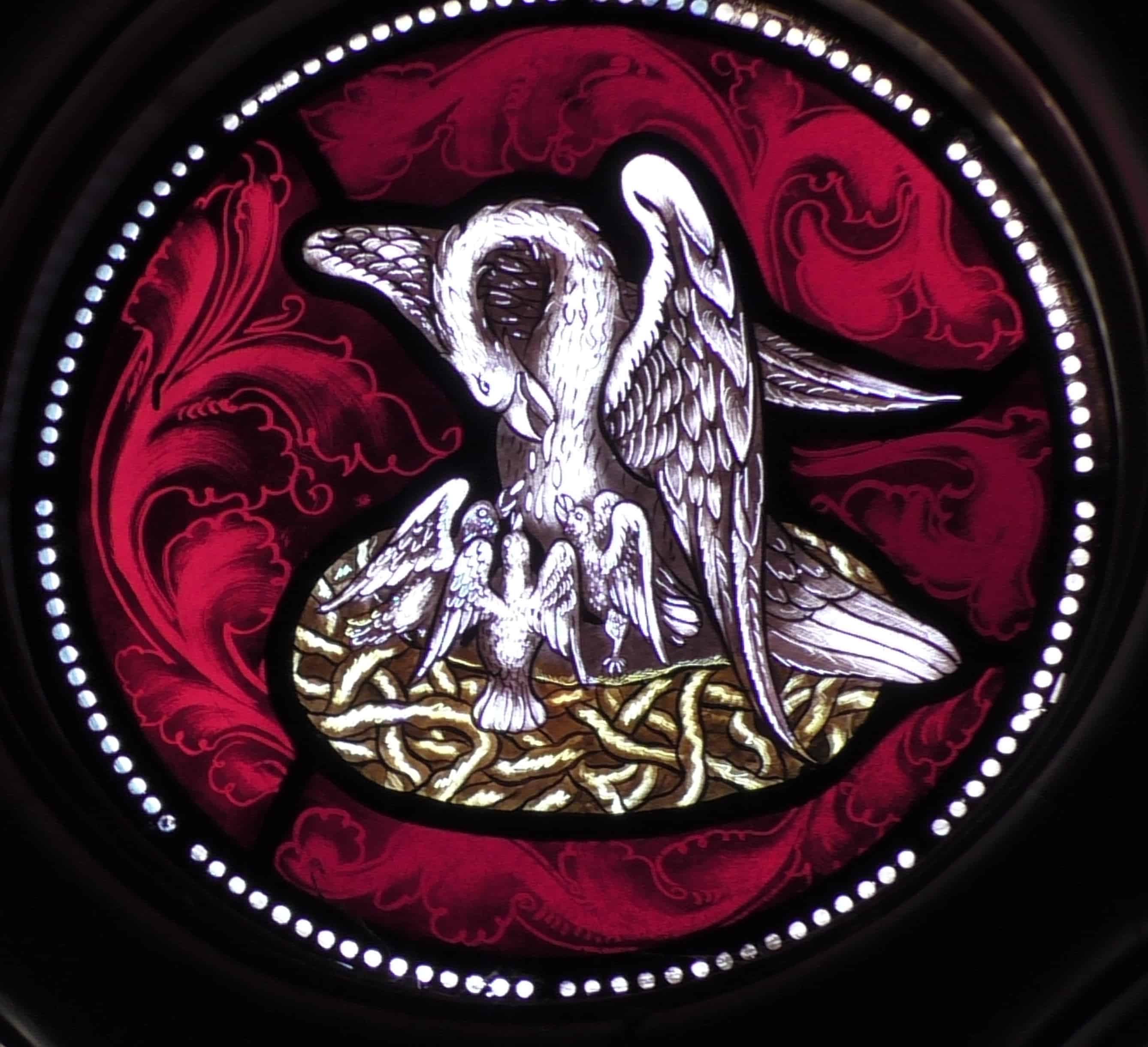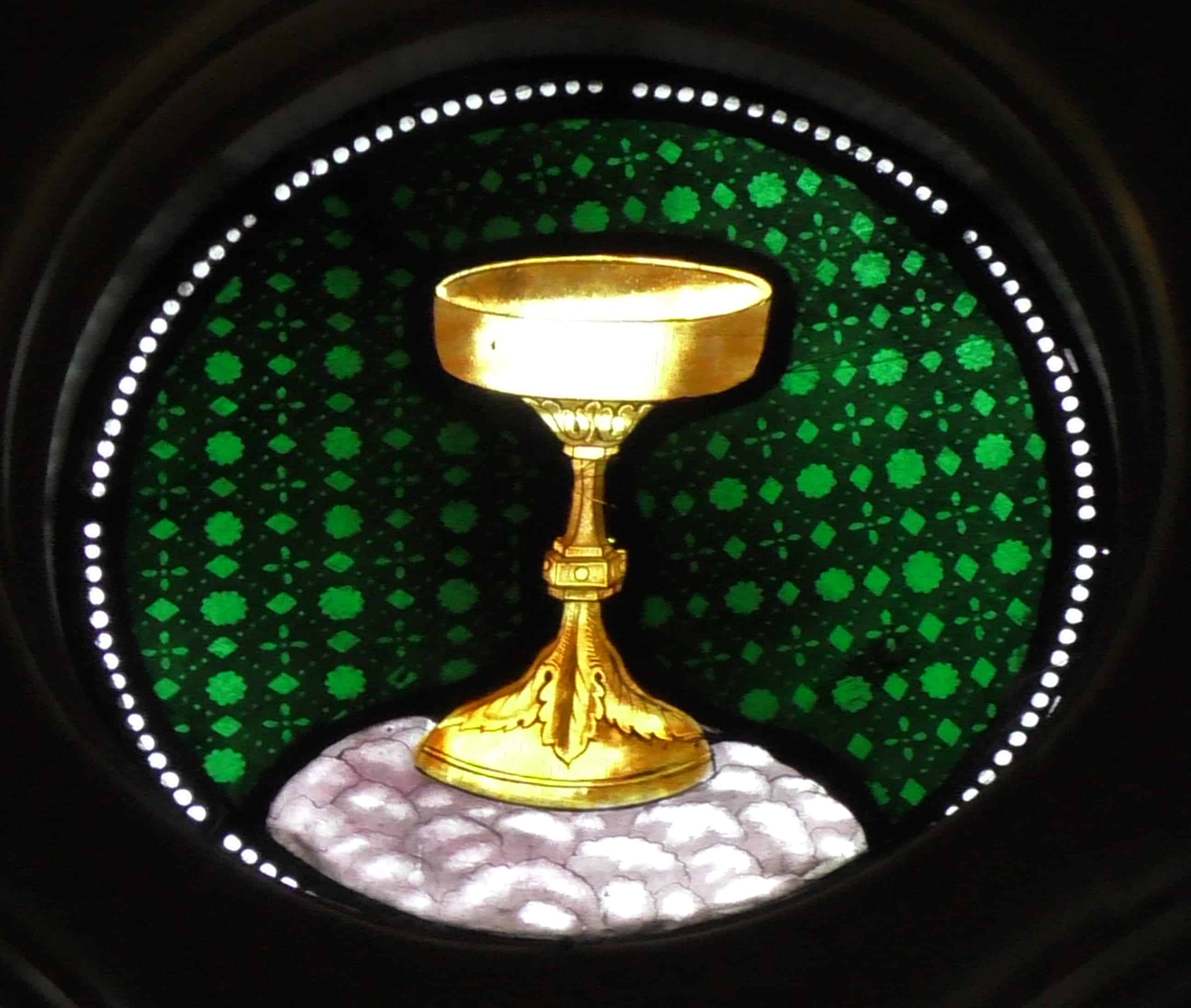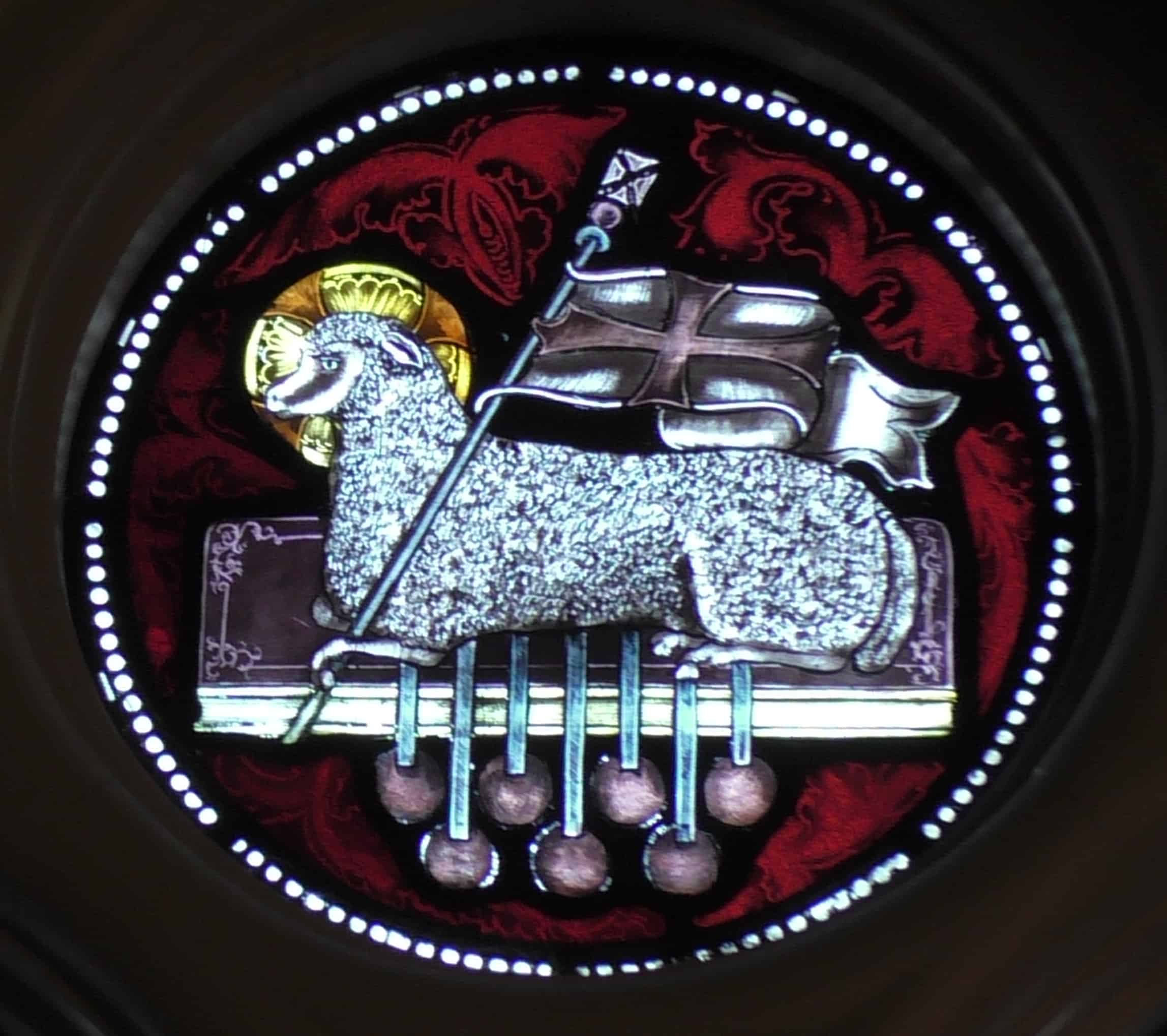 The next round window is an image of a mother pelican feeding the baby pelicans. This image actually pre-dates Christianity. Legend has it that when there was a great famine, the mother pecked a wound on herself so that she could feed her babies. Thus, she risked her own life for that of her children. It is an image of a mother’s love, but a mother’s love comes from the God, who made all mothers. Jesus came and risked His life to save us. This risk is not in word only. Jesus joyfully was willing to do what He could to save us from peril, even if that meant He would die.
The next round window is an image of a mother pelican feeding the baby pelicans. This image actually pre-dates Christianity. Legend has it that when there was a great famine, the mother pecked a wound on herself so that she could feed her babies. Thus, she risked her own life for that of her children. It is an image of a mother’s love, but a mother’s love comes from the God, who made all mothers. Jesus came and risked His life to save us. This risk is not in word only. Jesus joyfully was willing to do what He could to save us from peril, even if that meant He would die.
Can you imagine the mother’s desperation to save her young to the point where she gives her very body so that they may live? She would have to know that there is no other way to bring about their salvation. We have no other hope than Jesus. He chose to die on the cross for us. He was willing to risk it all. As a mother considers her life intertwined with her young, so Jesus considers our lives intertwined with His. Jesus refuses to violate our free will. So we must choose Him in order for this sacrifice to save us. We cannot save ourselves. God’s love for us is not a condition of what we do. Jesus simply loves us. Still we have to respond. The mother pelican makes herself bleed, but the children have to receive her body.
This is an indirect symbol of the Eucharist. We receive the body of Jesus when we receive communion. It is in particular the body of Jesus when He is given up for all of us. We feed on His very self (Jn 6:56). Normally, when we eat things, the things we eat become a part of us. If we eat a carrot, we do not become a carrot; our bodies break down the carrot, use the nutrients that become part of our bodies, and get rid of the rest. But in this case, we become more like what we eat. We consume Jesus, which acts more like a seed that produces more of His graces in us for others to be strengthened. We become more like Jesus, and this manifests itself all the more for others.
 As we progress toward the back of the church, we see a chalice by itself. This is a simpler version of the stained glass with the cross in the back. This is the fifth symbol directly related to the Eucharist.
As we progress toward the back of the church, we see a chalice by itself. This is a simpler version of the stained glass with the cross in the back. This is the fifth symbol directly related to the Eucharist.
The next window is above the choir loft in the back. It is an image of the “triumphant lamb.” This symbolizes Jesus after the resurrection. Jesus is the lamb that was slain, but still lives (Rev 5:9). It actually depicts the scene in the book of Revelation, chapter five. This is an odd scene from the Bible, yet that is to be expected from the book of  Revelation. The lamb symbolizes Jesus. The lamb has a pierced side, which should remind us of when Jesus was pierced in the side with a lance after He died on the cross (Jn 19:34). But the strange thing is that this lamb, though slain, is alive; therefore, it is Jesus after the resurrection. The flag this lamb has is a sign of triumph. Jesus conquered sin and death (1 Cor 15:55-57) for us. We no longer have to pay the penalty of sin, which is death. He paid that price for us through faith in Him. So faith in Jesus gives us that same triumph. We too can lift high the cross that won us pardon and celebrate in procession with the Lamb who lives.
Revelation. The lamb symbolizes Jesus. The lamb has a pierced side, which should remind us of when Jesus was pierced in the side with a lance after He died on the cross (Jn 19:34). But the strange thing is that this lamb, though slain, is alive; therefore, it is Jesus after the resurrection. The flag this lamb has is a sign of triumph. Jesus conquered sin and death (1 Cor 15:55-57) for us. We no longer have to pay the penalty of sin, which is death. He paid that price for us through faith in Him. So faith in Jesus gives us that same triumph. We too can lift high the cross that won us pardon and celebrate in procession with the Lamb who lives.
